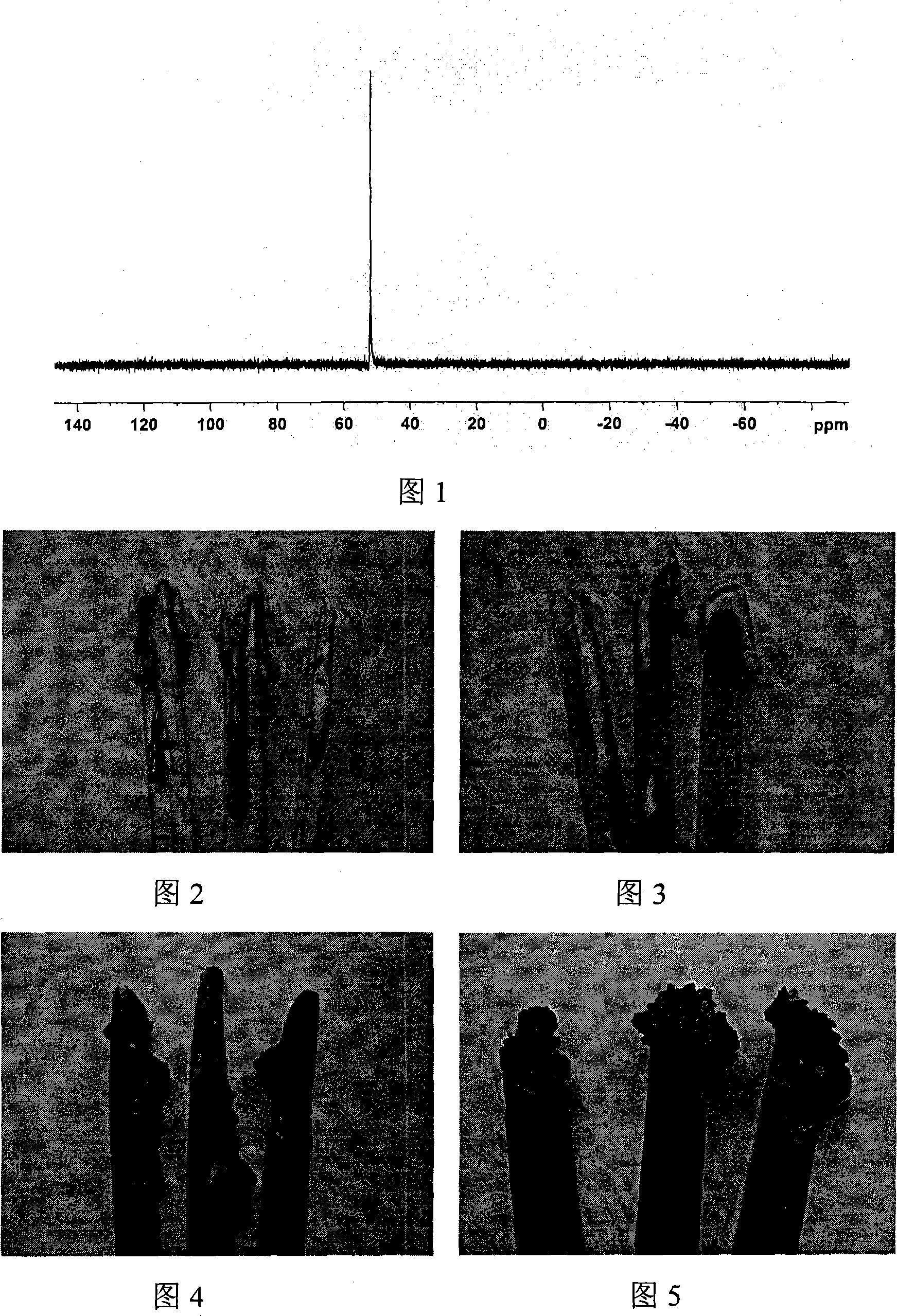Phosphoric flame-proof copolyester ionomer and preparation method thereof
A flame-retardant copolyester and ionomer technology, applied in the field of phosphorus-containing flame-retardant copolyester ionomer and its preparation, can solve the limited contribution of flame-retardant properties, affect polyester molecular crystallization, and destroy polyester chains Regularity and other issues, to achieve the effect of increasing viscosity, good regularity and symmetry, and ingenious molecular design
- Summary
- Abstract
- Description
- Claims
- Application Information
AI Technical Summary
Problems solved by technology
Method used
Image
Examples
Embodiment 1
[0052] Add 860g of terephthalic acid, 433mL of ethylene glycol (EG) and 0.301g of antimony trioxide into the reaction kettle, fill with nitrogen to remove the air in the kettle, pressurize to 0.07MPa; within 2h, raise the temperature to 240°C to start esterification Reaction, control the pressure in the kettle to be 0.3-0.4MPa. After maintaining for 2 hours, the pressure begins to decrease. After 1.5 hours, the temperature gradually rises to 260°C, the pressure drops to normal pressure, and the esterification reaction ends; nitrogen is slowly introduced into the reaction kettle, And the ionic monomer 3-(2-hydroxyethoxy)-3-oxopropyl (phenyl) sodium phosphinate (SHPPP) of 1.45g, the ethylene glycol solution is added in the reactor, and the temperature is controlled Above 210°C, when the temperature of the system rises slowly to 260°C, stop the nitrogen system and enter the vacuum polymerization stage, firstly, 260-270°C low vacuum polycondensation reaction for 0.5h, then raise th...
Embodiment 2
[0056] 860g of terephthalic acid, 433mL of ethylene glycol and 0.301g of antimony trioxide were added to the reactor, and the esterification reaction was carried out according to the steps and conditions given in Example 1; Nitrogen, and the ethylene glycol solution of the ionic monomer 3-(2-hydroxyethoxy)-3-oxopropyl (phenyl) phosphinate sodium of 14.5g is added in the reactor, and then according to the embodiment The steps and conditions given in 1 are carried out after polycondensation, and the material is discharged.
[0057] The intrinsic viscosity [η] of the ionomer is 0.67dL / g; the limiting oxygen index LOI is 25.6.
Embodiment 3
[0059] 860g of terephthalic acid, 433mL of ethylene glycol and 0.301g of antimony trioxide were added to the reactor, and the esterification reaction was carried out according to the steps and conditions given in Example 1; Nitrogen, and the ethylene glycol solution of the ionic monomer 3-(2-hydroxyethoxy)-3-oxopropyl (phenyl) phosphinate sodium of 72.5g is added in the reactor, and then according to the embodiment The steps and conditions given in 1 are carried out after polycondensation, and the material is discharged.
[0060] The intrinsic viscosity [η] of the ionomer is 0.64dL / g; the limiting oxygen index LOI is 27.0.
PUM
| Property | Measurement | Unit |
|---|---|---|
| limiting oxygen index | aaaaa | aaaaa |
| limiting oxygen index | aaaaa | aaaaa |
| limiting oxygen index | aaaaa | aaaaa |
Abstract
Description
Claims
Application Information
 Login to View More
Login to View More - R&D
- Intellectual Property
- Life Sciences
- Materials
- Tech Scout
- Unparalleled Data Quality
- Higher Quality Content
- 60% Fewer Hallucinations
Browse by: Latest US Patents, China's latest patents, Technical Efficacy Thesaurus, Application Domain, Technology Topic, Popular Technical Reports.
© 2025 PatSnap. All rights reserved.Legal|Privacy policy|Modern Slavery Act Transparency Statement|Sitemap|About US| Contact US: help@patsnap.com



